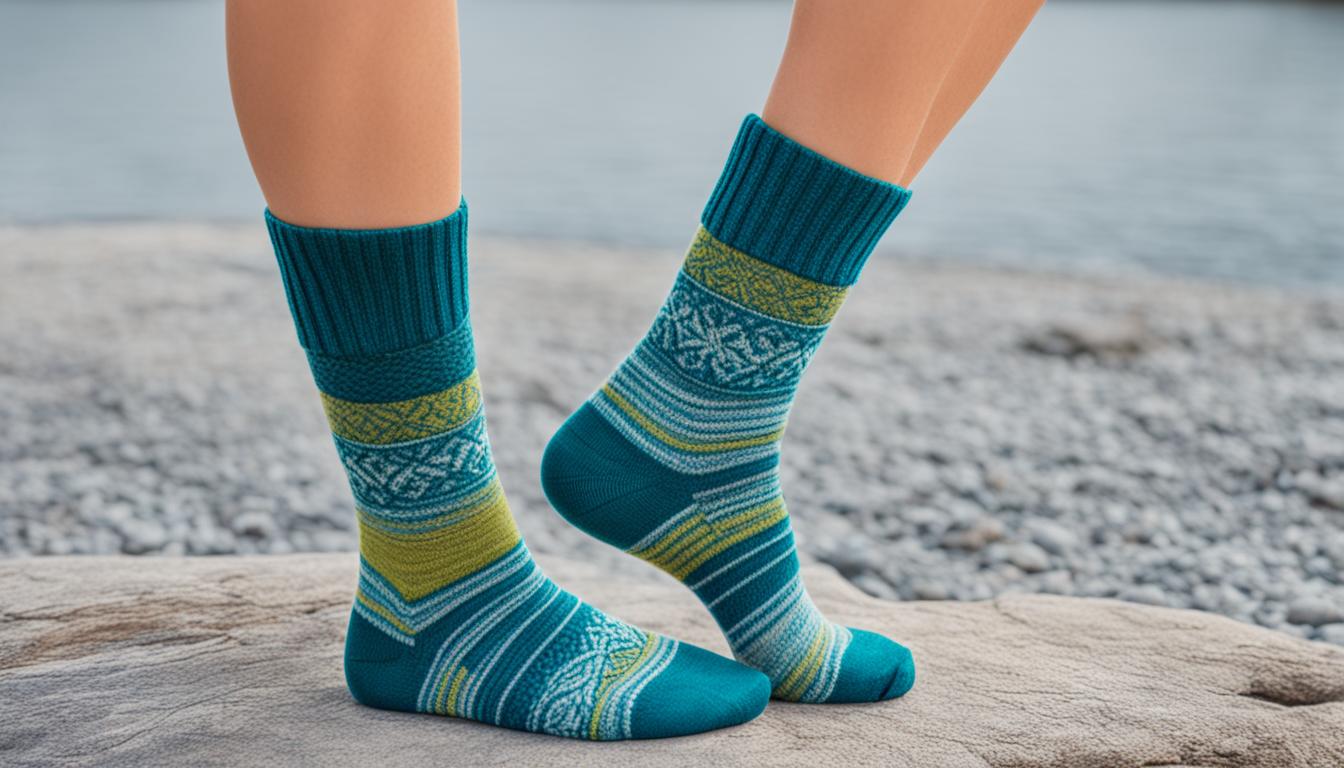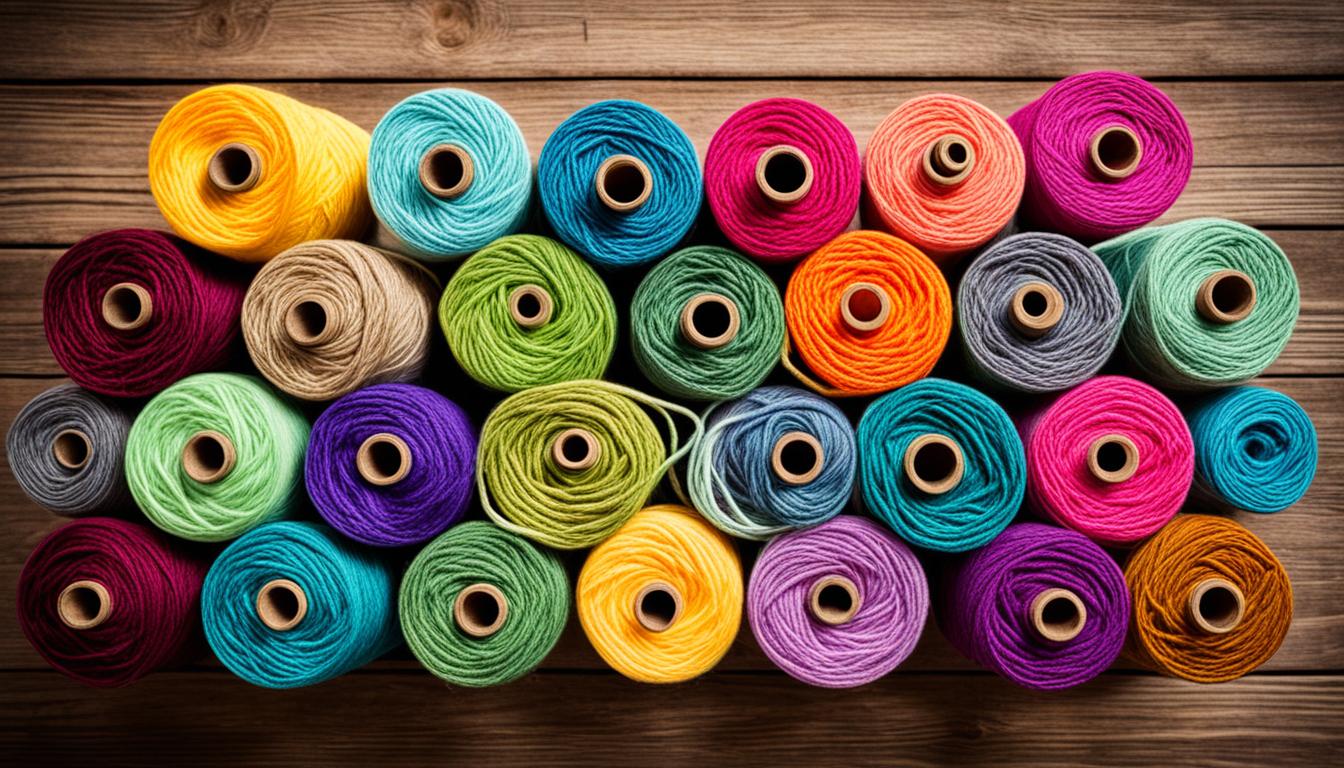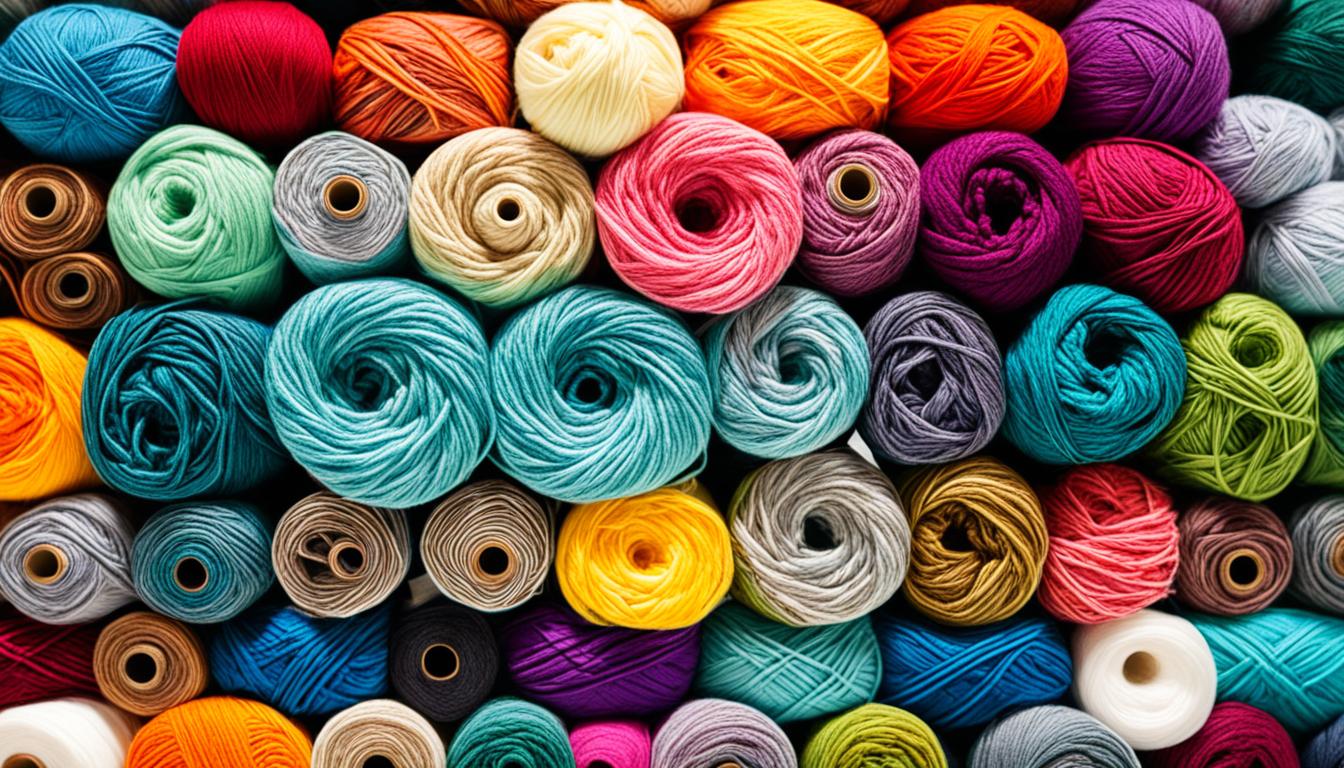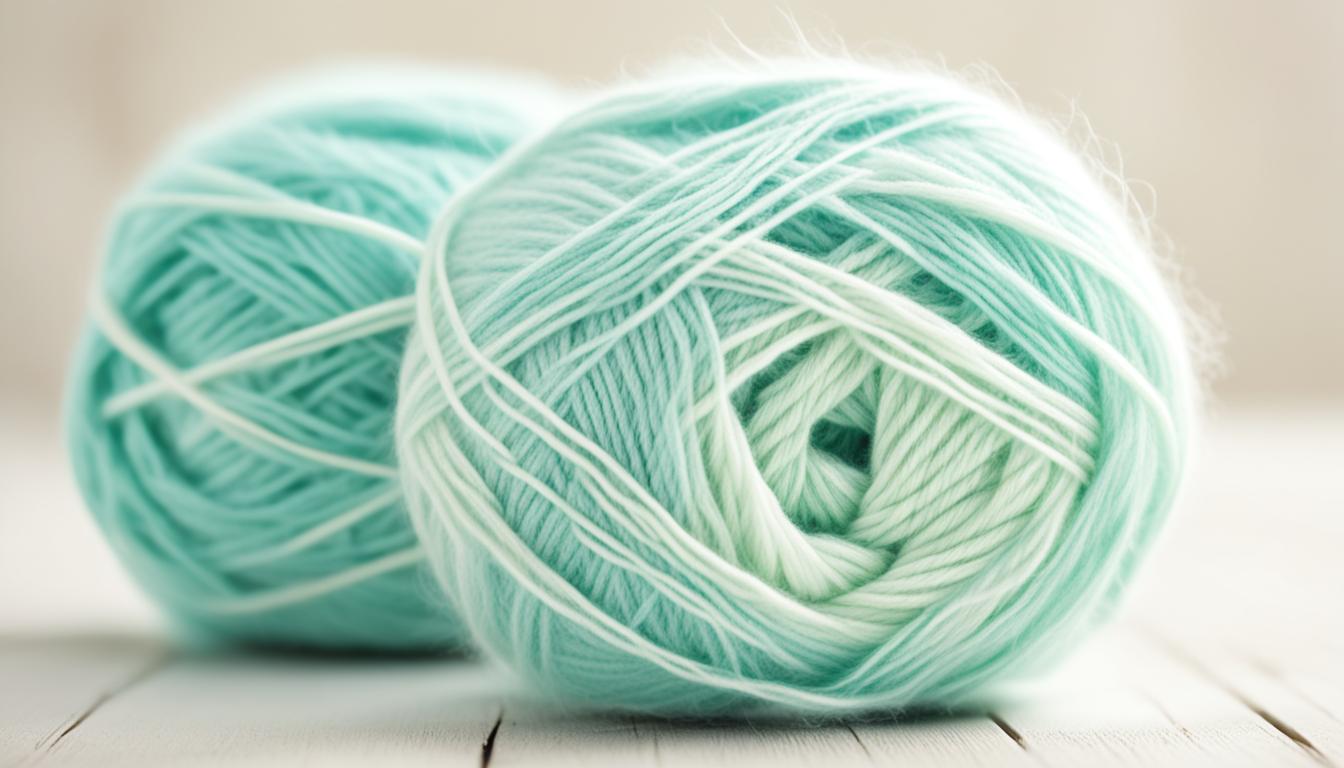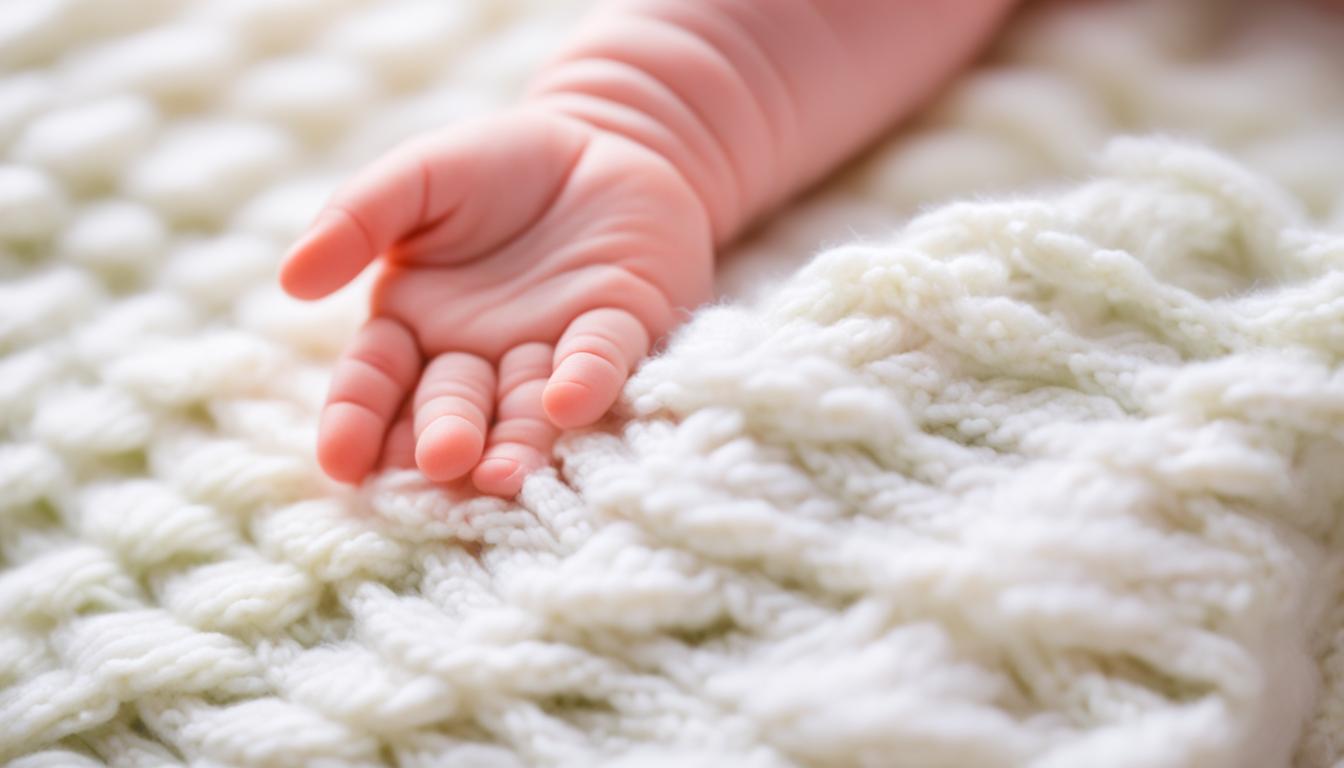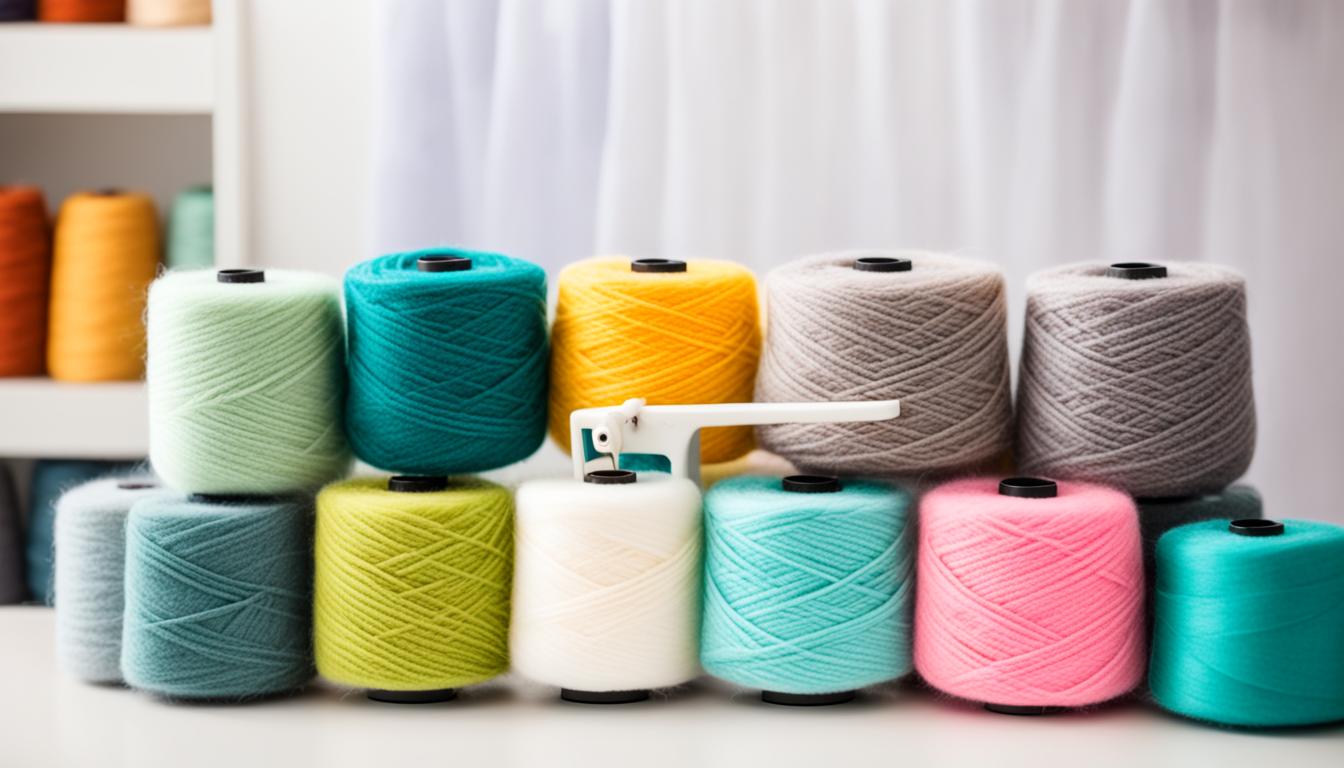When knitting socks, we all know that the pattern is important. But have you ever wondered which yarn is the best for sock knitting? The choice of yarn is just as crucial as the pattern selection, as it directly impacts the durability and comfort of your handmade socks. So, which yarn should you choose? Let’s find out!
There are various factors to consider when selecting the perfect yarn for your socks. You need a yarn that is hard-wearing to withstand constant movement and friction, elastic for a snug fit, and moisture-wicking to keep your feet dry and comfortable. Ultimately, the ideal sock yarn should be a perfect blend of durability, elasticity, breathability, and moisture management.
In this article, we will delve into the world of sock yarns. We will explore different types of sock yarn, the best materials for sock knitting, the importance of yarn weight, and the impact of yarn construction on sock durability. Whether you prefer wool blends, man-made fibers, or vegan options, we’ve got you covered. By the end of this article, you’ll have all the knowledge you need to choose the best yarn for your sock projects.
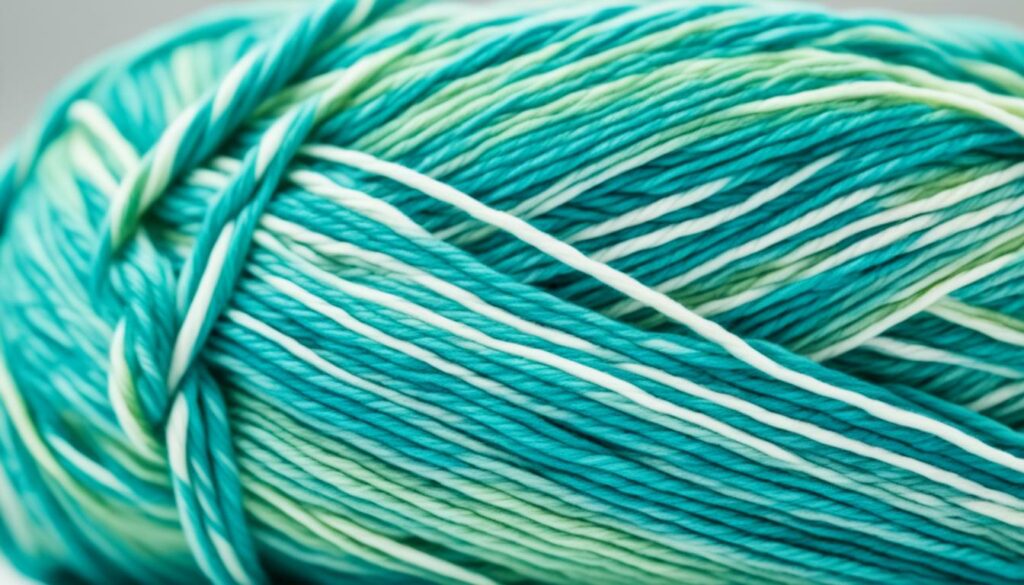
Refer to the table above to choose the ideal yarn weight for your sock knitting projects. Remember, the yarn weight will determine the overall look, feel, and durability of your socks.
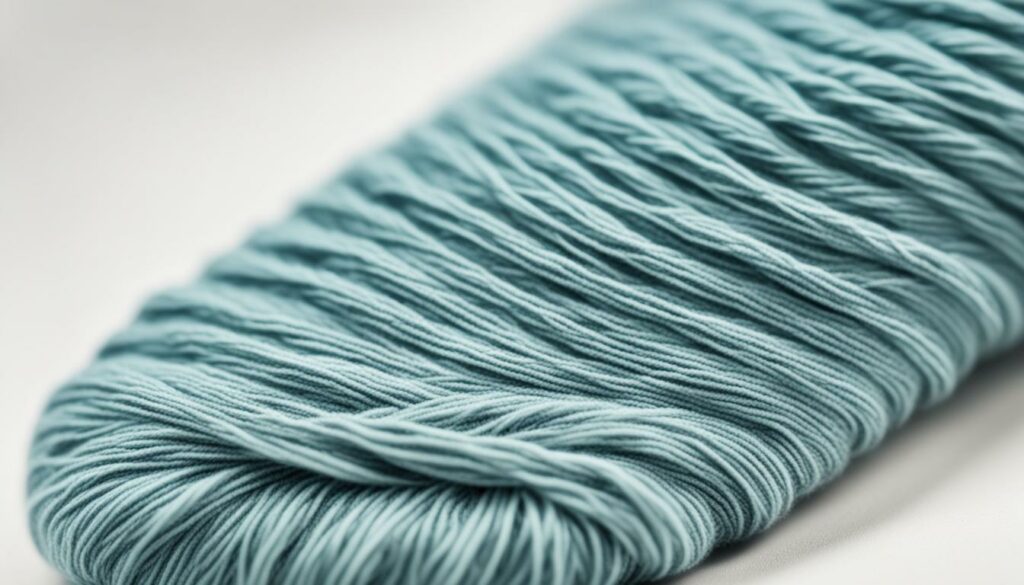
By understanding the different types of sock yarn and their characteristics, you can make an informed decision when selecting the best yarn for your knitting projects. Whether you choose superwash yarn for its easy care, single-ply merino yarn for its softness, or natural wool for its breathability and durability, there’s a sock yarn out there that’s perfect for you. Happy knitting!
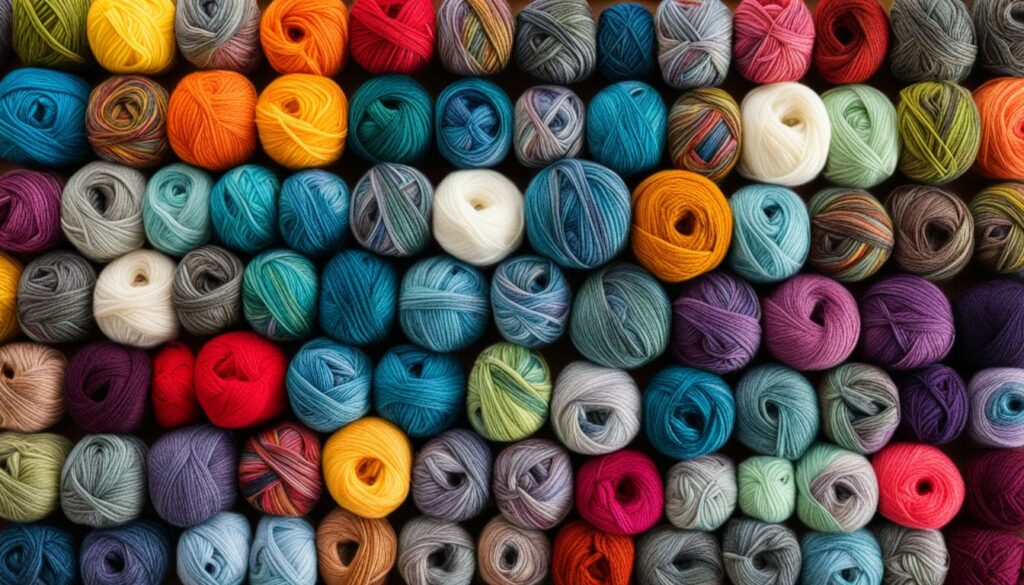
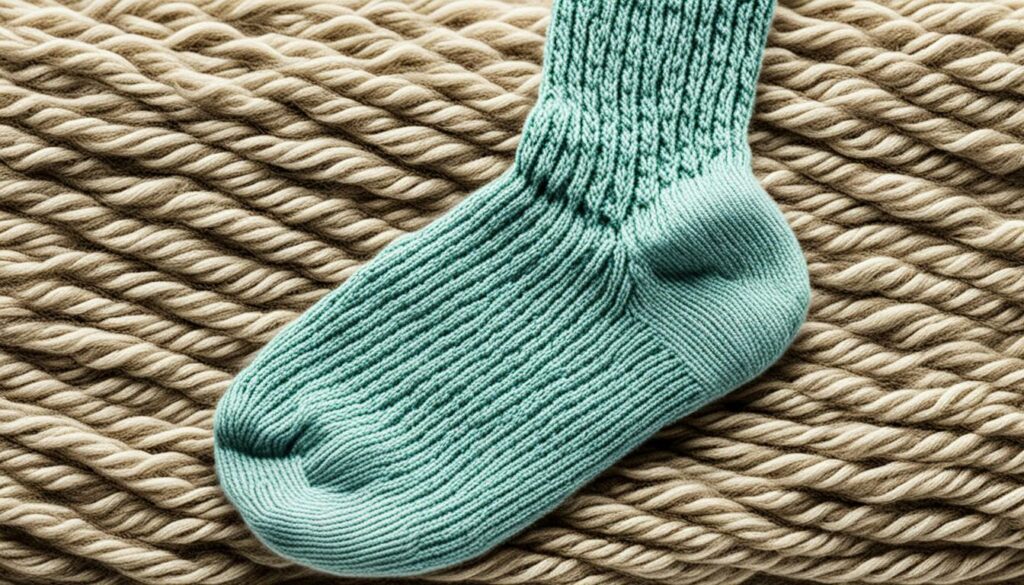 By carefully considering the specific blend and fiber combination, you can find the perfect wool blend sock yarn that meets your needs. So why not give them a try and experience the benefits for yourself?
By carefully considering the specific blend and fiber combination, you can find the perfect wool blend sock yarn that meets your needs. So why not give them a try and experience the benefits for yourself?
By understanding the importance of yarn construction in sock durability, you can make informed choices when selecting the right yarn for your sock knitting projects. Consider the number of plies, twist, and spinning technique to ensure that your socks are not only comfortable but also able to withstand the test of time.
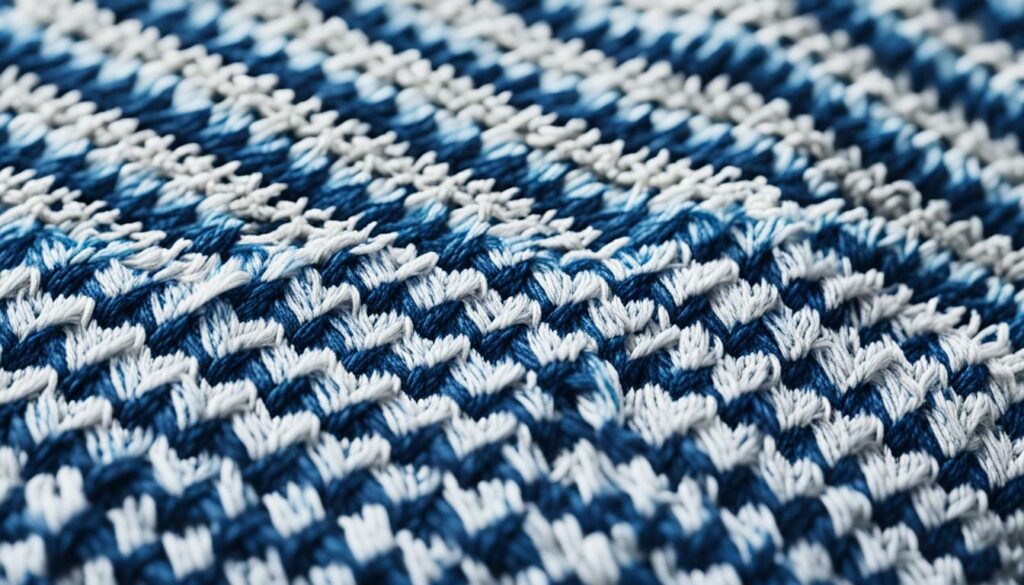
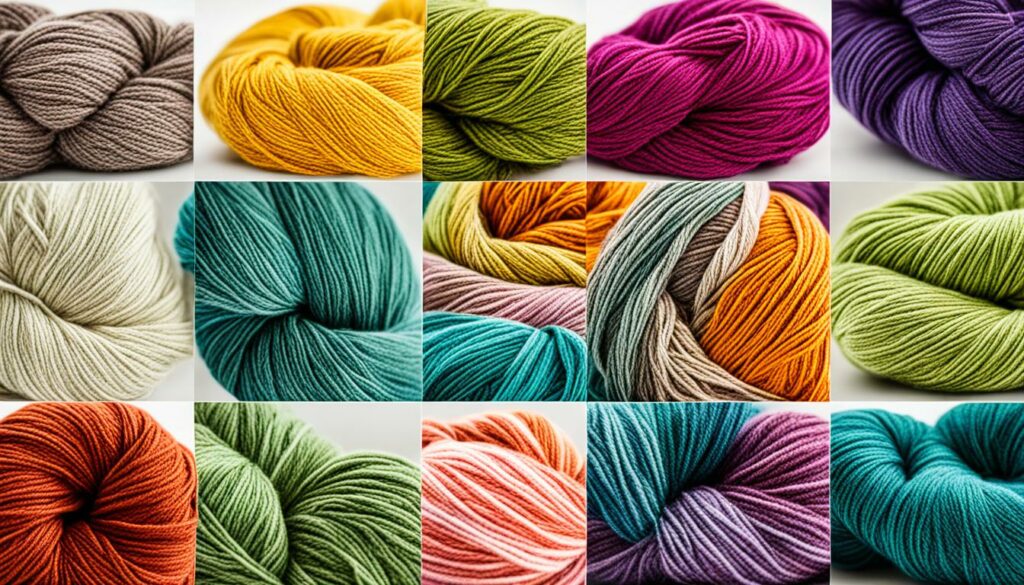 If you prefer a natural fiber alternative to wool, cotton blends are worth considering. While they may have less natural stretch compared to wool, cotton blends can still provide a comfortable and breathable option for your socks. Plus, they have the added benefit of being vegan-friendly.
“We understand the importance of choosing a yarn that meets your desired properties for sock knitting, while also aligning with your personal values and preferences.”
It’s important to choose a yarn that aligns with your values, meets your desired properties for sock knitting, and provides the durability and comfort you need. At Perfect Fit Living, we offer a range of man-made blends and cotton blends that are suitable for vegans and those with wool allergies. When shopping for sock yarn, keep your personal preferences and values in mind to find the perfect yarn for your projects.
If you prefer a natural fiber alternative to wool, cotton blends are worth considering. While they may have less natural stretch compared to wool, cotton blends can still provide a comfortable and breathable option for your socks. Plus, they have the added benefit of being vegan-friendly.
“We understand the importance of choosing a yarn that meets your desired properties for sock knitting, while also aligning with your personal values and preferences.”
It’s important to choose a yarn that aligns with your values, meets your desired properties for sock knitting, and provides the durability and comfort you need. At Perfect Fit Living, we offer a range of man-made blends and cotton blends that are suitable for vegans and those with wool allergies. When shopping for sock yarn, keep your personal preferences and values in mind to find the perfect yarn for your projects.
By selecting the appropriate sock yarn weight for each sock type, you can ensure that your handmade socks offer both the desired style and functionality. Whether you’re aiming for elegance with delicate dress socks or cozy comfort with boot socks and slippers, choosing the right yarn weight is crucial.
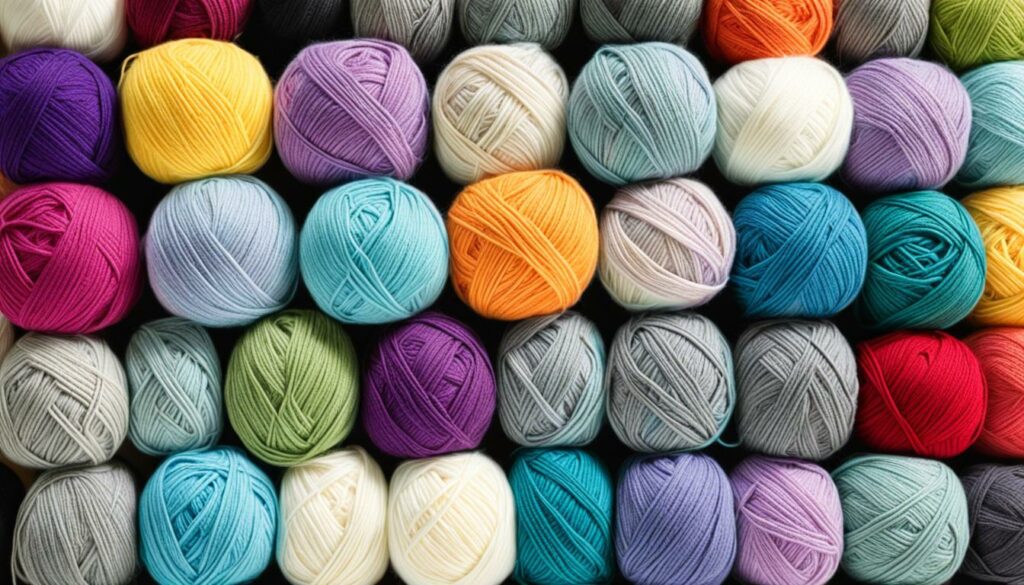
Key Takeaways:
- Choosing the right yarn for socks is crucial for durability and comfort.
- Sock yarn should be hard-wearing, elastic, and moisture-wicking.
- Wool blends are a popular choice for their durability, breathability, and moisture management.
- Man-made blends and cotton blends offer alternatives for vegans and those with wool allergies.
- The weight and construction of the yarn play a role in the performance of your socks.
Durability and Elasticity: The Key Qualities of Sock Yarn
When it comes to knitting socks, selecting the right yarn is essential. Sock yarn needs to be both durable and elastic to withstand the constant movement and friction that socks endure. The qualities of the yarn directly impact the performance and longevity of the finished socks. Wool blends are an excellent choice for sock yarn due to their exceptional durability, elasticity, breathability, and moisture-wicking properties. Wool, known for its natural resilience, provides the necessary strength to withstand wear and tear. Its long staple length and tight spin contribute to the yarn’s durability. Additionally, wool blends often contain nylon, a synthetic fiber that enhances the yarn’s strength and abrasion resistance, making it even more suitable for sock knitting. For those with wool allergies or individuals seeking vegan options, man-made blends and cotton blends are viable alternatives. Man-made blends, such as acrylic or polyester, offer comparable durability and elasticity to wool, providing excellent performance for sock knitting. Cotton blends, on the other hand, have a different stretch characteristic compared to wool but can still be suitable for specific sock designs. The construction of the yarn also plays a crucial role in determining its durability and elasticity. Sock yarns often have multiple plies with a tight twist, resulting in a stronger and more resilient yarn. The number of plies and the twist impact how well the yarn holds up to constant stretching and friction.“When choosing sock yarn, consider the qualities of durability and elasticity. Opt for wool blends or man-made blends with added strength from nylon. Cotton blends are an alternative for vegans or those with wool allergies. Pay attention to the construction of the yarn for improved durability and resilience.”By selecting a sock yarn that possesses these key qualities, knitters can create durable, comfortable, and long-lasting socks that will withstand the test of time.
The Importance of Yarn Weight in Sock Knitting
When it comes to knitting socks, choosing the right yarn weight is essential for achieving the desired fit and feel of the final product. The weight of the yarn you select will depend on the pattern you’re using and the type of socks you want to create. Let’s explore the different yarn weights commonly used for sock knitting.Fingering Weight Yarn for Sturdy Crochet Socks
Fingering weight yarn, also known as 4ply yarn, is a popular choice for knitting crochet socks that are sturdy and can easily fit into most shoes. Crochet stitches tend to be slightly bulkier than knitted stitches, so a 4ply crochet sock will not be as fine as a knitted 4ply sock. The slightly bulkier texture adds durability to the socks, making them ideal for everyday wear.Heavier Yarns for Boot Socks and Slippers
If you’re looking to knit boot socks or cozy slippers, heavier yarns like DK, aran, or worsted weight are more suitable. These yarns provide the extra warmth and durability needed for socks that will withstand the rigors of outdoor activities. The heavier weight also gives these socks a plush and cozy feel, perfect for keeping your feet warm on cold winter days. Choosing the right yarn weight is crucial for creating socks that fit well and meet your specific needs. Consider the pattern, style, and purpose of the socks before deciding on the yarn weight. Whether you opt for a fine 4ply yarn or a heavier yarn for boot socks, the right yarn weight will ensure a comfortable and well-fitting finished product.
Summary Table: Yarn Weights for Sock Knitting
| Yarn Weight | Description | Ideal Use |
|---|---|---|
| Fingering Weight (4ply) | Thin and lightweight yarn | Sturdy crochet socks |
| DK Weight | Medium-weight yarn | Everyday socks, boot socks |
| Aran/Worsted Weight | Heavyweight yarn | Boot socks, slippers |
Choosing the Right Fiber for Sock Yarn
When it comes to selecting the best fiber for sock yarn, wool is a top choice due to its outstanding qualities. Wool is highly regarded for its durability, elasticity, breathability, and moisture-wicking properties, making it an ideal option for socks that can withstand the rigors of daily wear. Additionally, wool from sheep with long staple lengths and tightly spun wool are especially hard-wearing, ensuring that your socks will maintain their integrity over time. One particular type of wool that is beloved among knitters and sock enthusiasts is merino wool. Merino wool is known for its exceptional softness and luxurious feel against the skin. This makes it an excellent choice for creating socks that prioritize comfort without compromising on durability.The Benefits of Wool Blends
While wool alone offers numerous advantages for sock yarn, combining it with other fibers can further enhance the properties of your knitted socks. Wool blends, such as those incorporating nylon or alpaca, provide additional benefits that can elevate your sock-knitting experience. Adding nylon to a wool blend increases the yarn’s strength and durability, making it even more resistant to wear and tear. This is especially beneficial for the high-friction areas of sock knitting, such as the heel and toe. Additionally, alpaca is a popular choice for blends as it imparts softness, warmth, and a beautiful drape to the finished socks.Vegan and Wool Allergy Options
For those who follow a vegan lifestyle or have wool allergies, there are alternative options available. Man-made blends, such as acrylic or polyester, can provide similar levels of durability and elasticity as wool, making them suitable alternatives for sock yarn. Cotton blends can also be considered, although it’s important to note that cotton has less natural stretch compared to wool. It’s essential to consider your individual preferences and requirements when choosing a fiber for sock yarn, ensuring that it aligns with your values and provides the desired characteristics for your knitted socks.| Fiber | Advantages |
|---|---|
| Wool | Durable, elastic, breathable, moisture-wicking |
| Merino Wool | Soft, comfortable, suitable for sensitive skin |
| Wool Blend with Nylon | Enhanced strength, increased durability |
| Wool Blend with Alpaca | Added softness, warmth, and drape |
| Man-Made Blends | Vegan-friendly, durable, elastic |
| Cotton Blends | Vegan-friendly, breathable |

Exploring Sock Yarn Types and Materials
When it comes to choosing the best yarn for knitting socks, it’s important to consider the various types and materials available. Each yarn type and material has its own unique characteristics that can greatly impact the final result of your socks.Superwash Sock Yarn
Superwash wool is a popular choice for sock yarn due to its ease of care. It can be machine washed without the fear of shrinking or felting. However, it’s important to note that the superwash process can sometimes affect the natural elasticity of the wool. So, while superwash sock yarns are convenient, they may not have the same stretch and bounce as traditional wool yarns.Single-Ply Merino Yarn
Single-ply merino yarn is known for its softness and luxurious feel. It is often a popular choice for sock knitting projects due to its comfort against the skin. However, single-ply yarns may not be as durable as multi-ply yarns, so keep this in mind when selecting yarn for socks that will see a lot of wear and tear.Advantages of Superwash Yarn
“Superwash yarn is a great option for socks that require frequent washing. It offers the convenience of machine washability without sacrificing the overall look and feel of natural wool.”
Natural Wool Socks
For those who prefer the authenticity and durability of natural wool, there are many options available. Natural wool socks, especially those made from low micron and low-scale height fibers, provide both comfort and long-lasting wear. Wool is known for its breathability, moisture-wicking properties, and ability to regulate temperature, making it an excellent choice for socks.Advantages of Natural Wool Socks
“Natural wool socks offer superior breathability, moisture-wicking properties, and long-lasting durability. They provide warmth in cold weather, while still allowing your feet to breathe, making them an excellent choice for all-day comfort.”
| Sock Yarn Type | Advantages |
|---|---|
| Superwash Yarn | Convenient machine washability |
| Single-Ply Merino Yarn | Soft and luxurious feel |
| Natural Wool Socks | Excellent breathability and moisture-wicking properties |

The Benefits of Wool Blends in Sock Yarn
When it comes to choosing the perfect yarn for socks, wool blends offer numerous advantages. These blends combine the natural properties of wool with other fibers, such as nylon or alpaca, to create a yarn that is both durable and high-performing. One of the key benefits of wool blend socks is their breathability. Wool fibers have natural moisture-wicking properties, which help to keep your feet dry and comfortable throughout the day. By blending wool with other fibers, such as nylon, the breathability of the yarn is further enhanced, allowing your feet to stay cool and fresh. Another advantage of wool blend socks is their self-cleaning properties. Wool has a natural resistance to odors and can absorb and release moisture, which helps to prevent bacteria growth. This means that wool blend socks require less frequent washing, making them a convenient and low-maintenance choice. The addition of alpaca to a wool blend brings added softness, warmth, and drape to the finished socks. Alpaca fibers are incredibly soft and provide excellent insulation, making them perfect for colder climates or those who suffer from cold feet.“Wool blend socks offer breathability, self-cleaning properties, and the additional benefits of alpaca for softness, warmth, and drape. They combine the best of natural fibers and other materials to create high-performing and comfortable socks.”Overall, wool blend socks are a versatile and practical choice for sock knitting. They offer the benefits of natural wool fibers, such as durability and moisture-wicking, while also incorporating other fibers to enhance their performance. Whether you’re looking for breathability, self-cleaning properties, or added warmth, wool blend socks are sure to provide the comfort and functionality you need.
 By carefully considering the specific blend and fiber combination, you can find the perfect wool blend sock yarn that meets your needs. So why not give them a try and experience the benefits for yourself?
By carefully considering the specific blend and fiber combination, you can find the perfect wool blend sock yarn that meets your needs. So why not give them a try and experience the benefits for yourself?
The Importance of Yarn Construction in Sock Durability
When it comes to knitting socks, the construction of the yarn is a key factor in determining their durability. The number of plies and the twist of the yarn can greatly impact the strength and resilience of the finished socks. Sock yarns typically have multiple plies, which refers to the number of strands that make up the yarn. The more plies, the stronger the yarn will be. In general, a 4-ply construction is recommended for sock yarn, as it provides excellent durability. The twist of the yarn also plays a crucial role in its durability. The twist refers to the way the individual fibers are spun together. A tight twist creates a sturdy yarn that can withstand the rigors of wearing and washing. When choosing sock yarn, look for a tight or high twist to ensure long-lasting socks. Another factor to consider is the type of spinning technique used to create the yarn. There are two main methods: worsted spun and woolen spun. Worsted spun yarns have the fibers aligned in a parallel manner, resulting in a stronger and more durable yarn. Woolen spun yarns, on the other hand, have less-aligned fibers, giving them a softer and loftier texture, but they may not be as resilient as worsted spun yarns. A specific yarn construction technique that is highly recommended for sock durability is the 4-ply cable spin. This construction involves four plies twisted tightly together, creating a yarn that is exceptionally strong and resistant to wear and tear.Comparing Worsted Spun and Woolen Spun Yarn
| Factor | Worsted Spun Yarn | Woolen Spun Yarn |
|---|---|---|
| Durability | High | Lower |
| Alignment of Fibers | Parallel | Less-aligned |
| Texture | Smooth | Soft and loftier |

Considerations for Vegans and Wool Allergy Sufferers
At Perfect Fit Living, we understand that not everyone can or wants to use traditional wool sock yarn. For those who are vegan or have allergies to wool, there are alternative options that provide both comfort and durability. Whether you’re looking for vegan options or wool alternatives, we have something for you. Man-made blends, such as acrylic or polyester, can be excellent choices for those seeking vegan options for sock yarn. These blends offer similar durability and elasticity to wool, ensuring your socks will hold up to everyday wear and tear. If you prefer a natural fiber alternative to wool, cotton blends are worth considering. While they may have less natural stretch compared to wool, cotton blends can still provide a comfortable and breathable option for your socks. Plus, they have the added benefit of being vegan-friendly.
“We understand the importance of choosing a yarn that meets your desired properties for sock knitting, while also aligning with your personal values and preferences.”
It’s important to choose a yarn that aligns with your values, meets your desired properties for sock knitting, and provides the durability and comfort you need. At Perfect Fit Living, we offer a range of man-made blends and cotton blends that are suitable for vegans and those with wool allergies. When shopping for sock yarn, keep your personal preferences and values in mind to find the perfect yarn for your projects.
If you prefer a natural fiber alternative to wool, cotton blends are worth considering. While they may have less natural stretch compared to wool, cotton blends can still provide a comfortable and breathable option for your socks. Plus, they have the added benefit of being vegan-friendly.
“We understand the importance of choosing a yarn that meets your desired properties for sock knitting, while also aligning with your personal values and preferences.”
It’s important to choose a yarn that aligns with your values, meets your desired properties for sock knitting, and provides the durability and comfort you need. At Perfect Fit Living, we offer a range of man-made blends and cotton blends that are suitable for vegans and those with wool allergies. When shopping for sock yarn, keep your personal preferences and values in mind to find the perfect yarn for your projects.
Choosing Sock Yarn Weight for Different Sock Types
When it comes to knitting socks, selecting the right yarn weight is essential for achieving the desired fit and performance. The weight of the sock yarn should harmonize with the intended use and style of the socks. Let’s explore the recommended yarn weights for different sock types.Dress Socks: Fine Yarn for Elegance
For dress socks that exude sophistication, opt for fine yarns with a delicate stitch definition. Fingering weight yarn, also known as 4-ply or sock weight, is ideal for creating delicate and refined dress socks. This lightweight yarn allows for intricate stitch patterns and a close-fitting, elegant look. The fine texture of the yarn ensures a smooth finish, emphasizing the intricate details of lace or cable designs.Boot Socks and Slippers: Heavier Yarn for Coziness
When it comes to boot socks and slippers, a heavier yarn provides extra warmth and durability. For those cozy socks that will keep your feet warm during chilly days or inside snug slippers, consider using DK (double knit), aran, or worsted weight yarn. The thicker yarn adds insulation and cushioning, making it perfect for cold weather and sturdy footwear. With a heavier yarn, your boot socks and slippers will withstand the rigors of everyday wear.A Visual Comparison of Sock Yarn Weights
| Yarn Weight | Description | Recommended Sock Types |
|---|---|---|
| Fingering Weight | Fine and lightweight | Dress socks, intricate designs |
| DK | Medium weight | Boot socks, slippers |
| Aran | Medium to heavy weight | Boot socks, slippers |
| Worsted | Medium to heavy weight | Boot socks, slippers |

The Role of Yarn Characteristics in Lace Socks
When knitting lace socks, the yarn characteristics are crucial to achieving the desired result. The yarn’s drape and openness are essential for creating an elegant and flowing look in lace patterns. Additionally, the elasticity of the sock yarn plays a vital role in achieving a comfortable fit and ensuring that the lace maintains its shape during wear. Lace patterns often require yarns with good drape and openness to showcase the intricate details and delicate motifs. These characteristics allow the lace stitches to bloom and stand out, creating a visually stunning design. A yarn with excellent drape and openness will enhance the overall aesthetics of the lace socks. In addition to drape and openness, the elasticity of the sock yarn is crucial for lace socks. Lace patterns typically have intricate stitch patterns that require the yarn to stretch and bounce back to maintain the integrity of the lace. When choosing sock yarn for lace socks, it is important to consider yarns with sufficient elasticity to ensure a comfortable and form-fitting sock. Blocking is often necessary to enhance the drape, openness, and overall structure of lace socks. Blocking involves shaping the knitted piece to the desired dimensions and allowing the lace stitches to fully open up. It helps to even out the tension and bring out the lace’s beauty, creating a polished and professional finish. Proper blocking can significantly enhance the finished appearance of lace socks. By considering the specific yarn characteristics of drape, openness, elasticity, and the need for blocking, knitters can create beautifully crafted and functional lace socks. These characteristics contribute to the overall aesthetic appeal of the socks, ensuring a stunning finished product.Conclusion
After considering the qualities of durability, elasticity, breathability, and moisture-wicking properties, we can conclude that choosing the best yarn for socks is essential. Wool blends, such as those with nylon or alpaca, offer a combination of strength and comfort, making them excellent choices for sock knitting. The weight of the yarn should be selected based on the desired design and fit of the socks, ensuring that the yarn chosen complements the intended style. For vegans and those with wool allergies, exploring man-made blends or cotton options can provide suitable alternatives. It is important to also consider the construction of the yarn, as this can greatly impact the durability of the socks. Additionally, lace socks have their own specific yarn requirements, including characteristics such as drape, openness, and elasticity. By taking into account these considerations, along with personal preferences, one can confidently choose the best yarn for knitting socks that are both cozy and durable.FAQ
What qualities should I look for in sock yarn?
When choosing sock yarn, look for qualities like durability, elasticity, breathability, and moisture-wicking properties. Wool blends are a popular choice due to their strength and comfort, while man-made blends and cotton blends are suitable alternatives for vegans or those with wool allergies.
How does yarn weight affect sock knitting?
The weight of the yarn determines the thickness and density of the socks. For delicate dress socks, fine yarns like 4ply or fingering weight are suitable, while heavier yarns like DK, aran, or worsted weight are better for boot socks or slippers.
What are the advantages of using wool for sock yarn?
Wool is a highly recommended fiber for socks due to its durability, elasticity, breathability, and moisture-wicking properties. Wool blends, such as those with nylon or alpaca, enhance these qualities. However, those with wool allergies or vegans can opt for man-made blends or cotton blends.
What are the different types of sock yarn available?
Sock yarn comes in various types and materials. Superwash wool is popular for its machine-washability, while single-ply merino is soft. Natural wool socks made from low-scale height fibers provide comfort and durability. Different yarn types have specific properties to consider before choosing the best yarn for socks.
What are the benefits of wool blends in sock yarn?
Wool blends offer durability, breathability, moisture-wicking properties, and natural odor-repelling qualities. The addition of nylon or alpaca can enhance these benefits. Wool blend socks also have self-cleaning properties, requiring less frequent washing.
How does the yarn construction affect sock durability?
The number of plies and the twist of the yarn contribute to its strength and resilience. Multi-ply yarns with a tight twist are more durable. Worsted spun yarns tend to be stronger than woolen spun yarns. Specific yarn constructions, like 4-ply cable spin, are designed for sock durability.
What are the options for vegans or those with wool allergies?
For vegans or those with wool allergies, man-made blends like acrylic or polyester can provide durability and elasticity similar to wool. Cotton blends are also an option, although they have less natural stretch compared to wool.
How does sock yarn weight vary for different types of socks?
The weight of the yarn used in sock knitting depends on the desired fit and style. Fine yarns like fingering weight are suitable for dress socks, while heavier yarns are better for warmer and more durable boot socks or slippers.
What yarn characteristics are important for knitting lace socks?
Yarns with good drape and openness are desirable for lace patterns. Elasticity in the sock yarn is crucial for a comfortable fit and to maintain the shape of the lace during wear. Blocking is often necessary to maintain the openness and structure of the lace.
What factors should I consider when choosing the best yarn for socks?
When choosing sock yarn, consider qualities like durability, elasticity, breathability, and moisture-wicking properties. Take into account the specific type of sock, personal preferences, and any allergies or special values.
